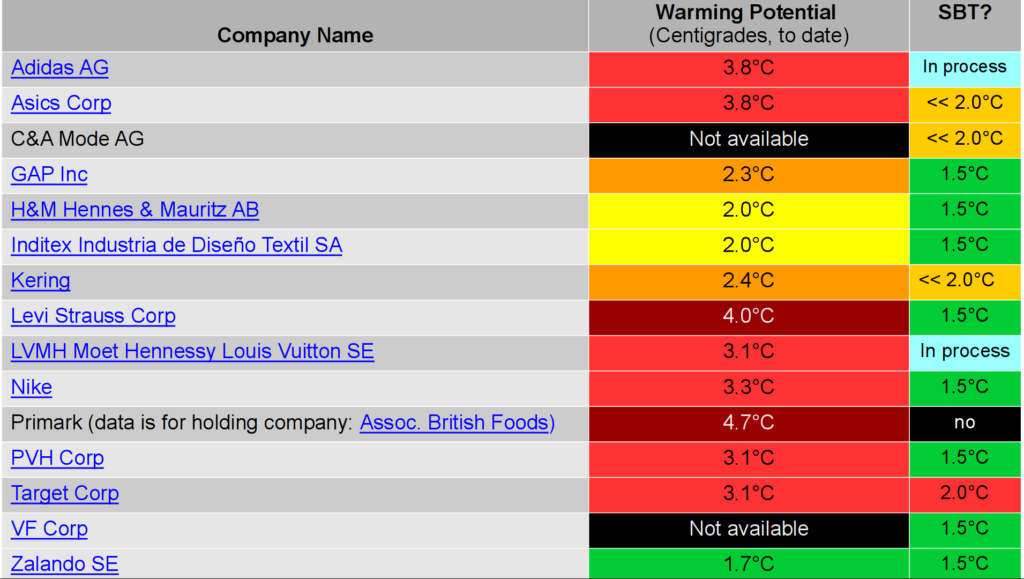
This is the first of a series of posts I will release going forward.
This particular one is focused on apparel/footwear companies, as a follow up to a recent post on fashion companies and their board diversity. But other industries will be looked at going forward.
The Why
Carbon – together with biodiversity – is one of THE most critical dimensions among the Planetary Boundaries. Because the already existing overshoot is putting our civilisation at risk. So far nothing new under the sun.
However, while biodiversity overshoot is not easy to measure, carbon is a different story entirely. It is so relatively easy to measure that doing so is even enshrined in reporting requirements for listed companies. Example of which are the TCFD (Taskforce for Climate-related Financial Disclosure) recommendations – by now often indeed turned into a requirement – to show investors scenarios with varying carbon/temperature trajectories and the risk for the company.
The big elephant in the room is of course:
- How do companies perform right now in terms of their carbon footprint? And:
- Do they have at the least commitments to work on a Paris Agreement trajectory?
Apparel Industry & the Paris Agreement
Most of readers will know the Science-based Targets initiative. A 5-step process for companies to commit, then set, and subsequently report against climate goals in alignment with the Paris Climate Agreement. Any company with aspirations to be public about their commitment can do so by signing up, and then moving through this quite rigorous process.
What is much tougher to know is the companies’ status quo , i.e. where they are right now on this journey. And how big the spread between status quo and publicly committed aspiration is. And hence also, how challenging their effort may proof to be in the years to come.
Luckily, the finance industry – investment managers in particular – have this exact problem for quite some time already. And even luckier: since recently a digital world map for investors exists, so they can assess the future viability and sustainability of their investments.
Data Credit: GlobalanceWorld gives free access to anyone interested in the carbon performance (‘warming potential’) of 6000 stock listed companies, as well as 9 of the largest indices such as the S&P500. The tool is sort of a ‘Google Earth’ to dive deeper into the key dimensions for the future fitness of a company. Warming Potential being one of those dimensions.
Hence, armed with the list of participants in the Science-Based Targets initiative, and freshly published insights from GlobalanceWorld, the following table summarises the insights we can glean by comparing them side-by-side:

Data on warming potential courtesy of www.GlobalanceWorld.com
Looking over the table, it is clear: the apparel and footwear industry is far away from being ‘on track’. Or ‘on trajectory’.
At the same time, it is uprising to see that there are some hidden, and for most, very unexpected champions: fast fashion can be out of sync with the demands of the current times as Primark (subsidiary of Associated British Foods) proofs. But at the same time, 2 fast fashion companies are leading the pack: H&M and Inditex.
Their break-away group, together with Kering and GAP, puts quite some distance between them and the peloton of the rest of their industry.
The conclusion simply is: if the status quo is anything to go by, we could comfortably pack up and leave Planet Earth through the back door of extinction. No doubt about it.
And yet – the commitments to the SBTs are promising. Maybe we can wait a little bit longer to throw in the proverbial white towel, after all …

